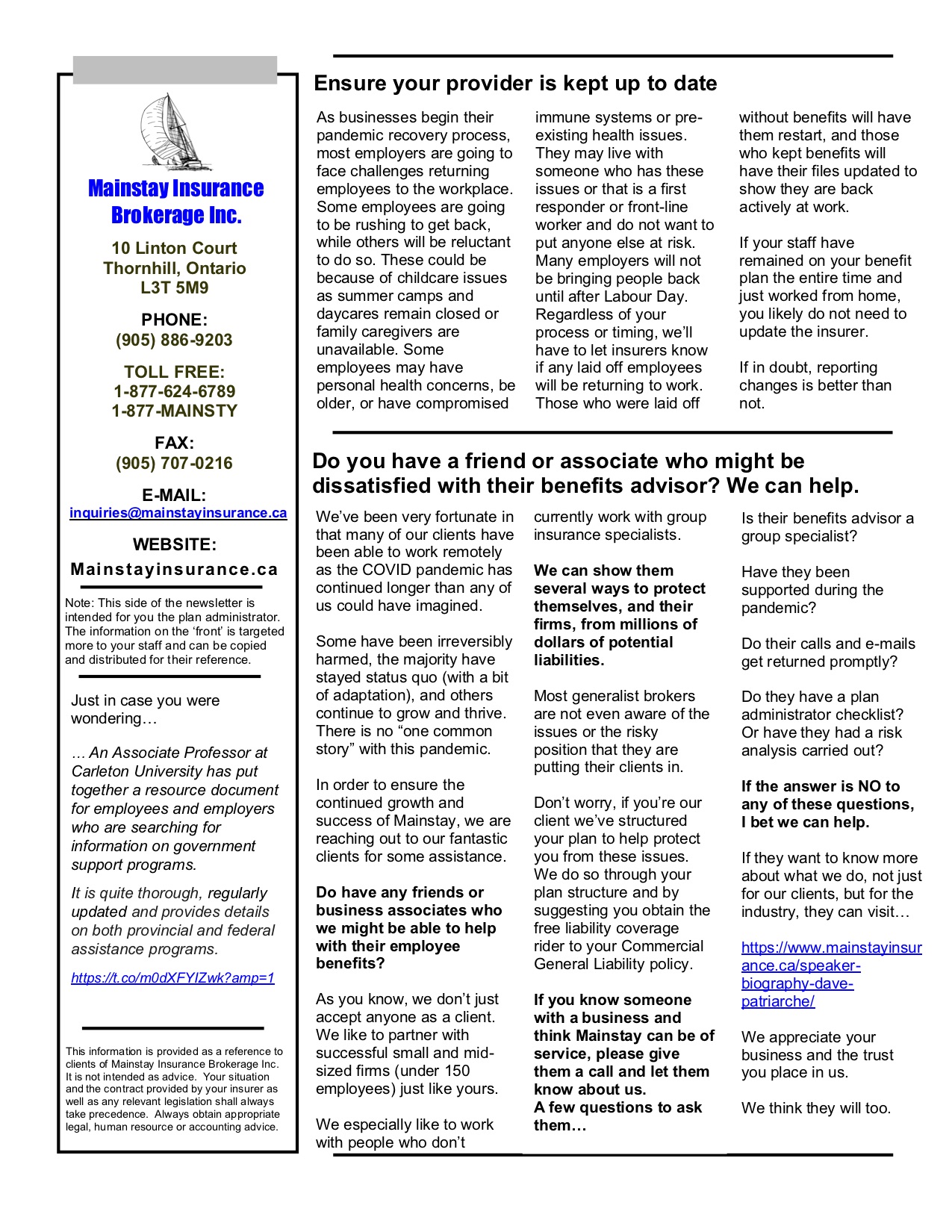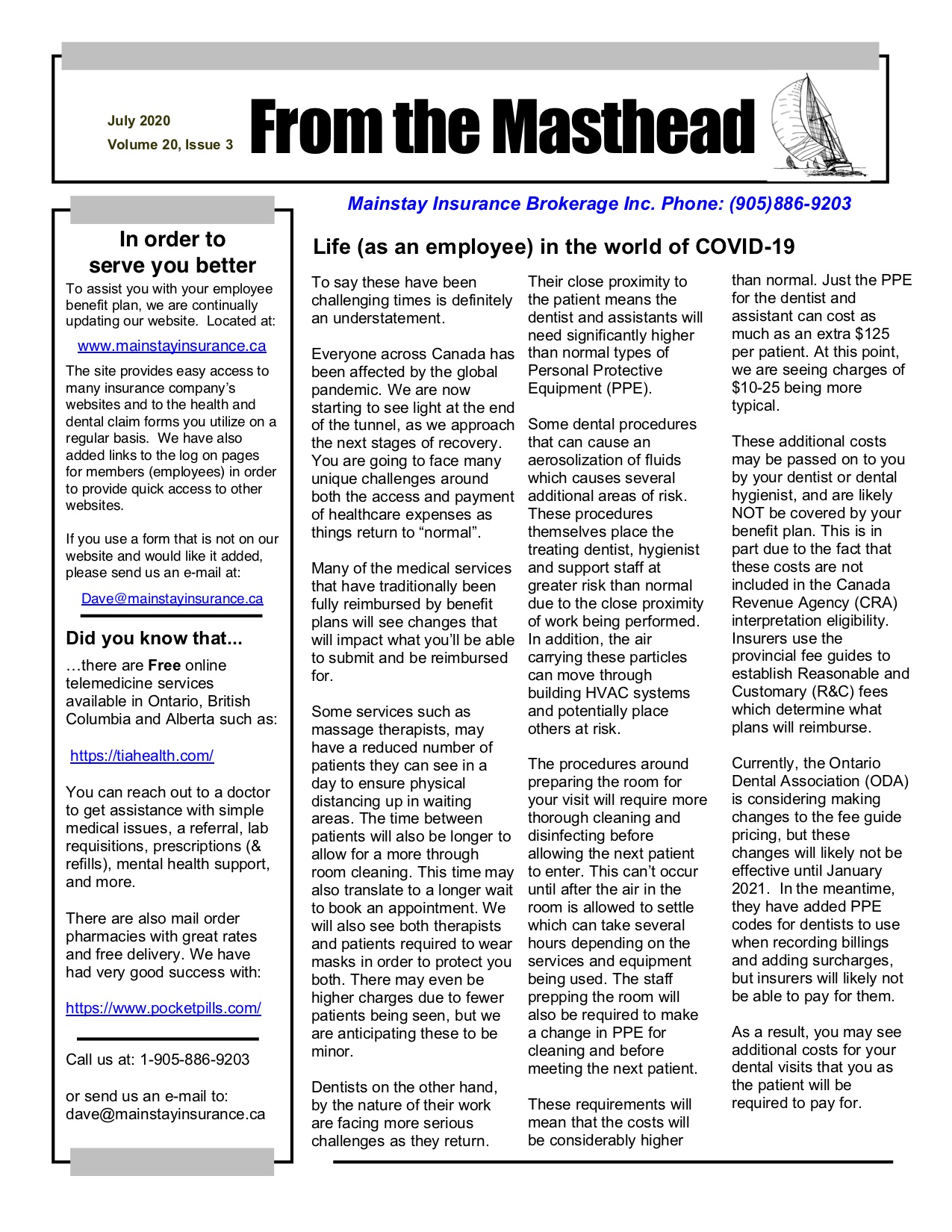As things start to slowly return to a new normal, we are seeing service such as massage, dental and other medical services start to open up.
I’ve polled my dental surgeon, dental hygenist and dentist friends and they are all back at it and ramping up pretty fast. Still, they are seeing fewer patients per day, and a long way from normal.
With this increased usage comes claims. With the claims, come questions and I am expecting lots in the coming months with most being about COVID surcharges.
Generally, extra charges over the Reasonable & Customary (R&C) fees, and over provincial dental fee guides are not eligible for reimbursement by plans. This is to protect benefit plans from abuse and overcharging and thereby keeping them affordable. The Ontario Dental Association (ODA)(and presumably others) have added PPE codes to their fee guide in preparation for the expected increased costs. The problem we have is that we are still waiting for the CRA to see if the claims can be reimbursed by plans.
Currently personal protective equipment is NOT an eligible medical expense (think work boots, welding gloves & shields, non-prescription safety glasses, hard hats etc.) so we would need to have CRA make some changes before plans would be allowed to pay them (assuming employers wanted that).
I mention this issue as employees may ask their employers about this in the coming months. It is not as simple as us asking for an exception, as it could be offside and potentially make plans taxable. We are pushing for help on this from a variety of sources, but not getting any clear direction just yet. Give us time, I’m working on it.




